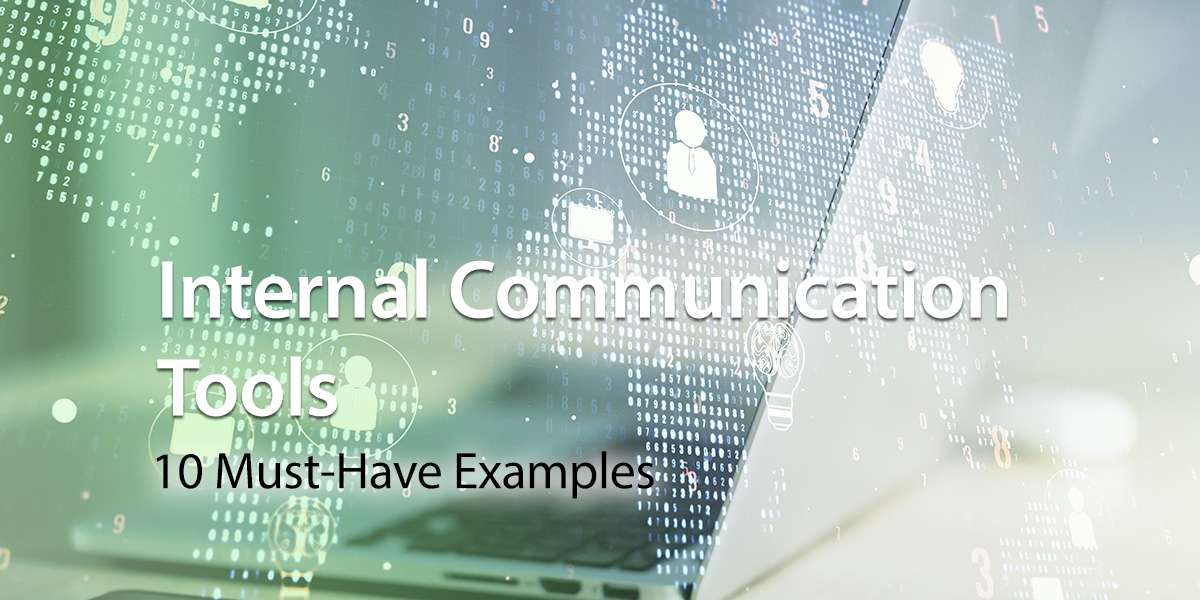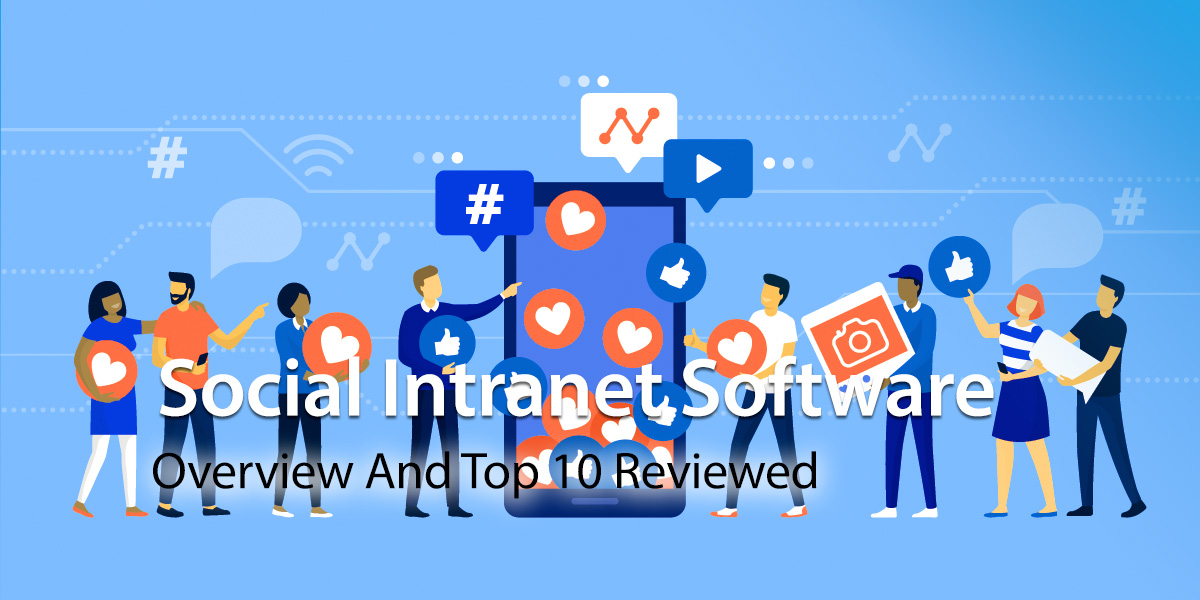Imagine transforming your internal communications with the perfect tools, saving hours every week, and fostering the productive, engaged workplace every organization aspires to. Sounds like a pipedream? Maybe not, as today’s vast range of employee communication software has made that aspiration a reality. The trick is knowing where to start. Today’s post helps you understand internal communication tools. We highlight the ten must-have tools for 2024 and share tips on how to choose the perfect tools for your organization.
Let’s start with the basics and explore the types of internal communication you want the tools to help you with.
What Are The Four Types of Internal Communication
Regardless of the industry, internal communication is the fuel that powers every organization. Effective internal communication significantly enhances teamwork, productivity, and overall company culture.
And while your people will communicate in lots of different ways, there are four standard types of employee communication:
Top-down Communication
This is the mainstay of internal communication and involves the flow of information from management to employees. It includes announcements, instructions, company news, and updates from the higher-ups to the rest of the organization.
Bottom-Up Communication
As you would expect, this type of internal communication involves feedback, suggestions, and reports from employees to management. It helps leaders understand the workforce’s needs and concerns.
Peer-To-Peer Communication
These are the interactions that take place between colleagues and team members daily. Peer-to-peer internal communications cover collaboration, sharing ideas, and team discussions. It also includes those all-important water-cooler conversations that help strengthen the team’s social bonds.
Crisis Communication
This type kicks in when there is an emergency or unexpected event. It ensures everyone knows about the situation and what they must do in response.
What Is An Internal Communication Tool?
It’s a digital tool designed to facilitate and enhance employee communications.
Communication tools help streamline the exchange of ideas, information, and feedback between employees, managers, and executives, ensuring everyone stays connected and informed.
What Are The Benefits Of Internal Communication Tools?
In today’s digital workplace, effective internal communication is king. Equipping your team with the right tools can transform collaboration, boost efficiency, and ensure everyone is on the same page.
Furthermore, according to one survey, 72 percent of business leaders believe that effective internal communication has boosted their team’s productivity.
Here are the headline benefits you need to know:
- Support effective collaboration with seamless interaction and idea-sharing
- Save time with streamlined processes and faster decision-making
- Connect in-office and remote employees and do away with geographic communication barriers
- Improve efficiency, clarity, and transparency so employees have a better understanding of task management
- Empower employees with the information they need when they need it
- Promote employee engagement and a positive company culture
How can Technology Bring IC To Life?
Communicating well with people within your company is, in many ways, even more important than how you communicate with those outside it. With employees demanding more engagement than ever before, not communicating with your team can severely impact not just morale and productivity, but your bottom line. Research even shows that 20 to 25 percent of companies’ revenue each year is being lost thanks to disengaged employees.
So with only 13 percent of employees using their intranet each day and 31 percent never using it at all, how can you make sure that employees are actually engaged with your internal communications? We’ve put together our top tips for using technology to make sure your internal comms are actually doing what you want them to do.
Open Up (Socially, That Is)

So what’s holding them back? A lack of engagement from the company leader, according to Harvard Business Review (HBR). Traditionally, leaders have tried to keep a level of distance or formality between them and employees – but today’s leader recognises the need to be a leader not just in person, but also digitally. After all, even the President of the US tweets and is all over Facebook! If a leader is able to show their engagement with a social network, it can prove a valuable tool for creating real connections between leadership and staff.
For example, as HBR describes, the President of UPS North California District, Rosemary Turner uses Twitter (because it’s the channel that most of their people are using) to share updates, photos of the team, and provide an open channel of communication for employees. Sending a ‘blast’ on Twitter has shown to result in more responses than sending out a survey internally.
When developing a social network: create interesting content that appeals to your employees; keep it front and centre on your intranet; encourage employees to take part; and most importantly, be open and honest about what’s happening – you won’t regret it.
Get Moving

Make It Fun
Everyone loves a game. The new buzzword in technology might be “gamification,” but it’s a philosophy companies have used for years, through work contests, wellness programs, fundraisers and more. With technology, that can be taken to the next level, through leader board, completion bars, badges and more, all updated in real time and shared throughout the company. Need to engage people in your intranet? Reward employees for everything from watching videos to joining in discussions. Employees will feel celebrated and enjoy engaging with your internal communications more.
Give Them Something To Watch

With one study finding that “audiovisual content is one of the most meaningful ways to communicate,” there’s no excuse not to include some in your internal communications strategy!
Get Writing

Above all, keep in mind that internal communications are all about engagement. Use technology to help draw in employees and don’t be afraid to be open in your communications, so they feel comfortable to do the same. Want to know more? Check out Rachel Miller’s (All Things IC) eBook Where’s Internal Communication Headed?
10 Most Effective Internal Communications Tools
Reviewing your internal communications strategy and want a toolset that delivers all the benefits outlined above? We’ve got you covered. Here are our top 10 picks of the essential employee communication tools.
1. Company Intranet
When it comes to the number one internal communication tool, the company intranet comes out on top.
An intranet is a secure internal network exclusive to your people. It’s a central hub, connecting employees to information, resources, and each other.
Intranets are incredibly versatile. Organizations use them for file sharing, project management, collaboration, knowledge sharing, automating business processes, and much more.
When it comes to internal communications, intranets have multiple tools under one virtual roof. Newsfeeds, internal newsletters, interactive blogs, employee directories, and real-time chat facilitate communication up, down, and across the organization.
With so many communication channels in one platform, it’s no surprise that the company intranet is the best internal communication tool.
2. Mobile Intranet App
An employee mobile app is another must-have internal communication tool for today’s workplaces.
Only 58 percent of US employees work fully on-site, and millions of deskless, remote, and on-the-go workers risk being left out of the loop. A mobile intranet app can bridge the communication gap. Using mobile devices will facilitate internal communication and support employee interaction from any location.
Employee communication apps keep all employees informed and on the same page, making them essential in your toolkit.
3. Updates Feed
MyHub’s intranet software has a unique feature that packs a punch when it comes to employee engagement and internal communications.
Our new updates feed brings together company news, shoutouts, push notifications, updates, and company announcements from across the intranet site.
The personalized updates feed cuts through all the noise so employees can focus on what’s important.
4. Instant Messaging Tools
The arrival of instant messaging platforms has been a game-changer for team communication, allowing employees to resolve issues quickly and easily.
One significant advantage of real-time chat is that it can be used for informal conversations and exchanging information, including files and links. Team members can also send direct messages, follow trending # discussion channels, or participate in group conversations.
In particular, these tools streamline communication for remote teams, making them an essential internal communication tool for 2024.
5. Collaboration Tools
Online collaboration tools are another must-have. These communication tools support brainstorming, seamless file sharing, real-time document editing, and efficient collaboration between team members.
A collaboration tool is perfect for organizations of all sizes, particularly those with geographically dispersed and remote teams.
6. Employee Feedback Surveys
Internal communications isn’t just a one-way street. Employee feedback surveys give workers an internal voice and are excellent for gathering insightful employee feedback.
They are also versatile communication tools. With a snap poll, you can gather instant feedback on your new employee engagement strategy. You can also measure your progress over time with an annual employee satisfaction survey.
Survey data can also improve decision-making, identify gaps, or even confirm that you are largely on track.
7. CEO Blog Or Vlog
Enhance workplace culture by improving the CEO’s visibility. A senior executive blog or vlog is the perfect internal communications tool for doing just that. Rather than being seen as a remote figure, a blog or vlog allows employees to get up close and personal with the CEO.
A leader’s blog can be a top-down communication tool for sharing company news, internal comms announcements and updates. It’s also a fantastic vehicle for showing the human side of the CEO to team members.
8. Knowledge Management Tools
Your employee communication software must also include knowledge management tools.
In the age of information overload, organizations need a single source of truth in a centralized, searchable resource. These internal communications tools help team members organize, store, and share company information, data, and know-how.
Employees can easily retrieve information when needed, minimizing time wasted searching for that golden nugget of knowledge. And from the organization’s viewpoint, knowledge management ensures you’re making the most of your people’s collective wisdom.
9. Project Management Tools
No internal communications toolkit is complete without project management tools. These communication tools empower teams to plan, track, and execute projects with ease.
Whether you’re tackling a small or large project, these platforms help employees manage deadlines, monitor progress, and deliver successful outcomes.
10. Internal Social Networks
Incorporating social networks into your internal communication strategy can transform your organization’s operations, making it more connected, engaged, and efficient.
Something as simple as a # social network channel on team chat provides opportunities for workers to interact, participate in discussions, and build those all-important social bonds.
Internal networks create a sense of community and belonging, making them one of the best internal communication tools.
How To Choose Internal Communication Software
Need help selecting the perfect internal communication software for your organization? We totally understand. After all, there are plenty of digital tools out there. Check out the following tips to make your decision easier.
Identify Your Needs
The first step is to understand your organization’s communication challenges. Do you want to improve collaboration, streamline project management, or enhance employee engagement?
Clarity around your objectives will help you focus on the internal communication tools that will address your challenges.
Evaluate Features
Look for software that offers the features you need. Standard features include instant messaging, video conferencing, file sharing, collaboration tools, and integration with other corporate apps like CRM and HR systems.
User-Friendly Interface
Check that the software is easy to use and doesn’t require extensive training. An engaging user interface will drive adoption and employee satisfaction.
Scalability
Ensure you choose employee communications software that can grow with your business. The platform should be flexible enough to adapt to your changing communication needs.
Integration Capabilities
Check that the internal communication software can integrate with your existing tools and systems. Rather than adding to your tech stack, you want to avoid data silos and ensure seamless workflows.
Security And Compliance
Protecting sensitive company information is critical. So, make sure the software meets data security standards and complies with relevant regulations.
Reputation And Support
Undertake due diligence and research the reputation and customer support of the internal communication software. Check out independent review sites and testimonials from other users.
Cost Analysis
Finally, compare the pricing plans to ensure the communication software is within your budget and you get value for your investment.
Internal Communication Tools FAQS
What Is Employee Communication Software?
Employee communication software is another name for internal communication tools. These digital platforms streamline and enhance an organization’s internal communications. Employees can access these tools anytime and anywhere using mobile devices or desktops.
What Is An Internal Communication Strategy?
An internal communication strategy is a comprehensive plan to ensure that all members of the organization are well-informed, engaged, and aligned with the company’s goals and values. Internal communications strategies outline the methods, tools, and channels for sharing information, ideas, and feedback among employees, managers, and executives.
Vital elements include the following:
- Defining your objectives and goals
- Identifying target audiences and communication channels
- Selecting appropriate employee communication tools
- Setting performance measures.
What Is The Most Widely Used Internal Communication Software?
Intranets are one of the most widely used internal communication software because they offer a comprehensive set of features in one central platform. Instead of multiple apps for different functions, an intranet ticks all your internal communications needs in one go.
MyHub: Best Internal Employee Communication Software
MyHub is your all-in-one employee communication platform. Our internal communications software is designed for non-techies and has a user-friendly interface that your team members will love.
We also offer comprehensive features designed to power up your internal communications. From instant messaging, collaboration, and knowledge-sharing features to our unique updates feed, it provides everything you need to keep team members connected and informed.
MyHub’s employee communication tools are also available in a mobile app, ensuring employees on the go have all the tools and information they need.
Furthermore, MyHub offers seamless integration with over 60 enterprise apps, including Microsoft 365, Google Workspace, Sage HR, Salesforce, monday.com, and much more.
Ready to transform your internal communications? Sign up for a free demo or 14-day trial.











